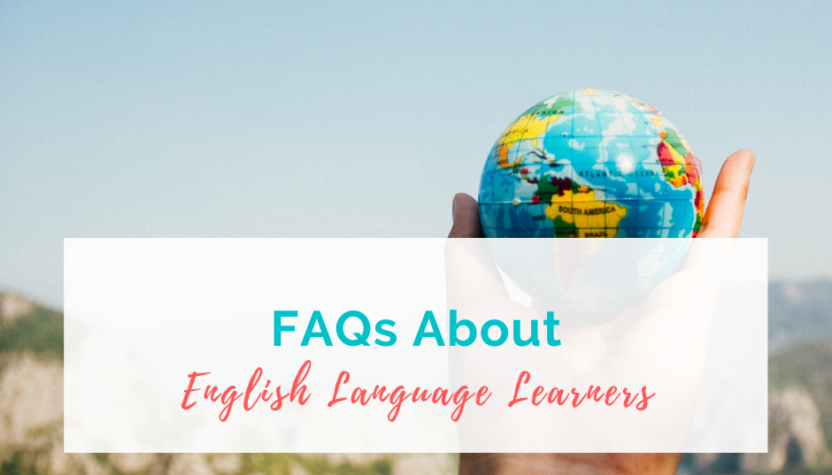There are so many acronyms in English Learner education.
ESL, ESOL, EFL, EL, LEP, ELL, L1, WIDA, CLD
I could keep going, but I’ll spare you. Here is an overview of some of the common terminology and frequently asked questions I get from teachers and parents.
Who are EL students?
English Learners (ELs) are students who speak another language at home and (based on testing) need some additional support to succeed with the academic language demands of school.
What is the difference between EL, ESL, and ESOL?
These are all different names for the same thing.
- EL = English Learners
- ESL = English as a Second Language
- ESOL = English for Speakers of Other Languages
Many educators have moved away from using “ESL” because of the stigma. Also, it may not be a student’s second language; it may be their third or fourth. I use EL as my preferred terminology.
What does LEP mean?
LEP = Limited English Proficient
This terminology is used more frequently in legislation about EL students. It means that they have taken a language test (like WIDA ACCESS) and scored lower than their native-speaking peers. The term LEP also has a stigma because it is deficient-focused. Educators don’t use this term as much, but you may still see it in federal or state guidelines. I avoid using it–you should too.
How can a student be an EL if they were born here?
Students have to be assessed to see if they are eligible for EL services. Sometimes a student may not “seem” like an EL at first because they don’t have an accent. I have the same experience every August. A classroom teacher will report, “She’s fine, she speaks English!” One month later that story usually changes to, “She is really struggling with _______” (vocabulary, comprehension, writing, etc.) I’ve seen these students can be so incredibly successful in general education classrooms with a few tweaks and EL supports.
How long does a student receive EL services?
First off, there is no such thing as a “typical” EL student.
- Some have just moved from another country.
- Some were born here.
- Some can read and write in their first language.
- Some can’t read in any language.
- Some have experienced trauma in coming to the US.
- Some are US citizens.
- Some will only be in this country for a year or less.
- Some will be here for the rest of their lives.
This question is hard to answer because it depends on the student’s background. In teacher education programs, they say the average is 5-7 years in EL services. In my experience, it could be as little as 1 year, or a student could be in services for all 13 years of their K-12 education. They will “exit” or leave services when they get a high enough score on language proficiency test (measuring reading, writing, speaking and listening).
Can an EL student have an IEP?
Yes! A student who speaks another language can certainly have a learning disability. I would be really careful and thoughtful about recommending special education testing for ELs. In some places, ELs are over-identified, and in others districts,they are under-identified. I have thoughts about this, but this post is not long enough for all of them.
What will EL services look like for a student?
Students might meet with an EL teacher in a small group setting. They might have a co-teacher for part of the day that is EL certified. They could meet with an EL teacher one-on-one. If their homeroom teacher is EL certified, they will get differentiation in the gen ed setting. This will vary across states and districts because students’ needs vary.
Check out what I’m doing with my EL Learners for distance learning in 2020.
I’m loving using Google slides to graph my EL’s fluency growth. Grab my FREE Digital Fluency Tracker now!


